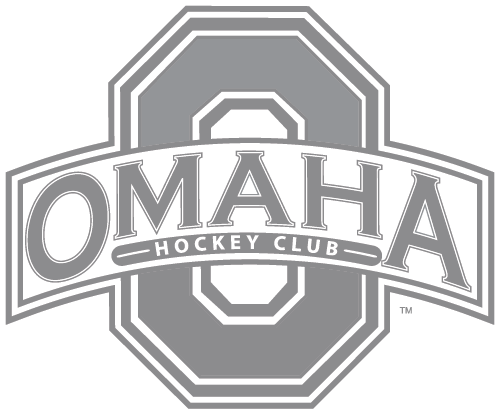

Equipment 101
RECOMMENDED HOCKEY EQUIPMENT
Hockey parents should be advised that buying hockey equipment for their skater is not a one-time expense. As the child grows, the need for proper equipment grows. It is dangerous for a skater to have ill-fitting equipment; equipment that is too large hampers his/her skating, and equipment that is too small endangers them because the protection is not adequate.
If you have any questions about whether your child’s equipment is adequate, it is very important that you check with your coach or pro shop to get the answers. Equipment should be professionally fitted.
Equipment should be maintained properly after purchase. It will pick up bacteria and therefore should be aired properly after each use. Skate blades should be wiped down before covering. There should be a place in the family’s home just for the equipment to be properly maintained after each use, as it will rot if not dried adequately. Most equipment made today is washable and should be washed regularly.
- Skates - Must fit comfortably, though not so loose as to cause blisters when skating. Skate sizes are NOT the same as shoe sizes – skater must try on the skates before purchasing. White socks should be worn for comfort.
- Practice Socks - Hockey socks (colored, usually to match jersey) must be long enough to be gartered and to give skater room to grow. Mite house through Peewee house skaters are provided socks by the association.
- Shin Guards, Tape - To protect shin from pucks and sticks, to fit from knee to ankle. White tape is normally used to secure in place, or shin-guard straps (Velcro) may be used.
- Pants - Padded to provide some protection, must reach upper to mid-knees. Some skaters prefer long pants going to the ankles; however, can prevent skaters from easily getting up again after falling because of the material. Socks and short pants are the norm. Black is the preferred color.
- Athletic Cup - Not only for boys; girls need proper protection also.
- Shoulder Pads - Should not be so large as to hamper movement, but should provide some protection against bruises resulting from skating into boards, or in later years, checking. Too large of size pads will cause pads to fall away from the shoulders and will not protect the collarbone.
- Elbow Pads - Ideally, elbow pads should protect the area between the top of the elbow pad to the top of the glove. Again, it is important for proper sizing – especially as the skater grows. Is an important piece of equipment in preventing skate cuts along the arm when the skater has fallen.
- Gloves - There are many brands of gloves and price ranges on the market. The glove must fit the skater’s hand to have proper movement, but also should have room for growth. Worn, tattered gloves have no place on the ice. The top of the glove should ideally meet the elbow pad. The length of the glove can protect skate cuts along the arm when the skater has fallen.
- Helmet - US Hockey has strict rules regulating helmets for amateur hockey players. Your pro shop can assist you in purchasing the proper helmet. If you have an older used helmet, you may have to purchase proper straps for it and plug the ear holes that are no longer allowed.
- Mouth Guard - It is a USA Hockey rule that amateur hockey players from Squirt and up wear a mouth guard. The guard must be colored. It is an USA Hockey requirement that mouth guards be connected to the facemask.
- Neck Guard - Required as of the 2024-2025 season.
- Practice Jersey - An expensive jersey is not needed for practices. It should provide comfort and not be too large as to hamper movement, not too small that it binds the movement. It is usually a good idea to have an extra one in the child’s bag, as it is not unusual for the skater to forget his/her jersey at least once a season. Mite house through Pee Wee house skaters are provided a jersey by the association. IP skaters are required to purchase a jersey.
- Travel teams are provided with game jerseys. Teams can decide themselves if they choose different practice jerseys.
- Stick - The hockey stick is left or right handed, comes in different lengths and different curves on the blade, or has a straight blade. The length is determined by the following: If in street shoes, the end of the blade should go to the nose; if in skates, the end of the blade should go to the chin. The stick will hardly ever be perfect; buy it longer and have the pro shop adjust it by cutting off the end. A dime shouldn’t be able to pass under the curve o f the stick; otherwise, it is illegal and may result in a penalty. Sticks come in adult, intermediate and junior sizes. A reputable pro shop will be able to help you size a stick to your skater. There are solid wooden sticks and aluminum shafted sticks with replaceable wooden blades. Adhesive tape of any color is usually used on the blade and handle for friction. The end of a hollow stick MUST be fully covered.
- Goaltenders - For goaltenders, special equipment is necessary, such as: gloves (catching and stick), chest and stomach protector, goalie skates (with a protective shell), leg pads, and shoulder and arm protectors. The goaltender's equipment is especially important, so seek advice from a knowledgeable source.
It cannot be stressed enough that proper equipment be worn by each skater. It can prevent serious injuries – if ill-fitting, or worn out, it does not give the protection it was meant to give.
Oops!
You have unsaved elements
Please save or cancel the pending changes to the elements within your page and then try saving again.
